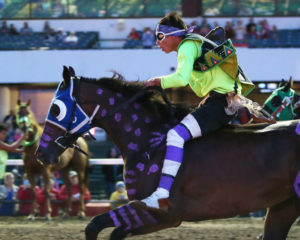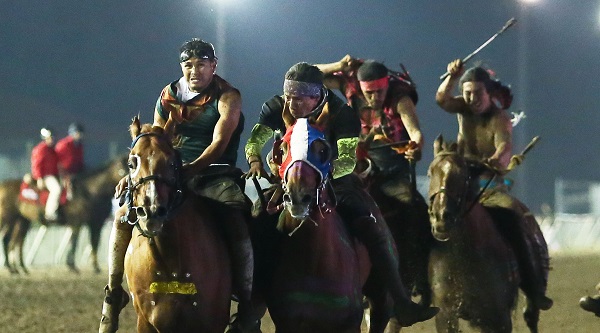By Jim Wells
Outside, over 150 horses grazed under the watchful eye of White Man’s Dog….It seemed odd that two sleeps ago these horses were content to belong to the Crow. Now they were Pikuni (Blackfeet) horses and seemed equally content.
FOOLS CROW BY JAMES WELCH
By some accounts, the first sport in the American West was horse stealing, by one Indian nation from another. It was a method by which young warriors and hunters sharpened the requisite skills for living in nature, for survival against the beasts of the forests and the plains and against other human beings.
By other accounts the first sport was horse racing, among the various nations that gathered to celebrate the coming of spring each year, and the hibernation of Cold Maker as the Pikuni might have described it, the time when Cold Maker called off the snows and winds in an annual truce.
The nations would gather in the valleys for food and games. Horse racing ruled one nation against the other. In the melting snows and warming suns of those faraway times the Crow, Shoshone, Blackfeet, Northern Cheyenne, and Arapaho presented a harbinger of what would become Indian Relay Racing.
Horses were necessary, magical and spiritual in the lives of those First Nation peoples. They transformed them from trudging tribes, traipsing from the winter camps to their summer lodges, into the masters of the plains, disappearing like the wind when necessary into the surrounding hills and hunting the sacred buffalo from the backs of the descendants of animals Cortez and his Spanish forces brought to the Americas centuries earlier.
The horse and the First Nation peoples were allies in daily life among untamed hills, mountains and valleys, where animal and man in this instance became partners in a ritual nearly as old as Cold Maker himself.
Come with us into the valleys of those long ago times for a look at what was _ altered, of course, by the immense change over the years, change that seemed imminent from the time the Pikuni first spotted the endless floods of Napikwans and the iron horses they called trains, and began to see the buffalo disappearing before their very eyes.
Indian Relay is sport popular mostly in the northwestern United States.
Nonetheless, the Sioux peoples had racing of their own as well and it is at the behest of the Shakopee Mdewakanton Sioux Community, in cooperation with Canterbury Park, that Indian relay racing has been part of the season here the past five years.
Today’s form of relay racing, by some accounts is 100 years old or older and is a means today for young Indians to connect with their tribal heritage and customs. It is also an astonishing sport, viewed by the participants themselves as something akin to “organized mayhem,” particularly during exchanges, when a rider changes horses and is assisted by a mugger, who stops the horse, a setup man and a holder in charge of the rider’s next horse _ three horse exchanges to a race, all ridden bareback.
The exchanges sometimes result in a chaotic scene immediately in front of the grandstand where the races start and end. Relay racing has become a popular part of many rodeos and pow wows in the northwestern states.
Sixteen teams will compete this week at Canterbury, including representatives of the Sioux and the Blackfeet. Two races are scheduled each night on Thursday, Friday, and Saturday.
The word for describing this type of racing might differ in the tongue of the Sioux, the Blackfeet, the Crow or the Sho-ban, but it means much the same as it does in English.
Thrilling.
Indian Horse Relay events will be held between the horse races Thursday and Friday nights. On Saturday there is a special 6pm first post with the Indian Horse Relay Championship being run that evening. Find information HERE.
